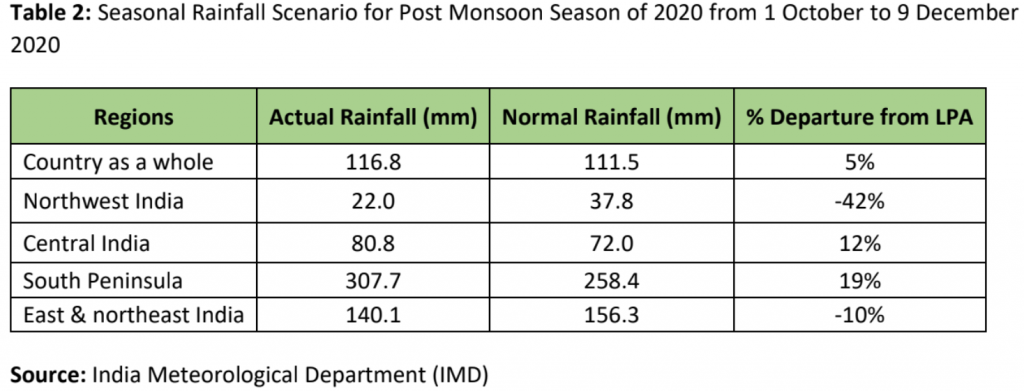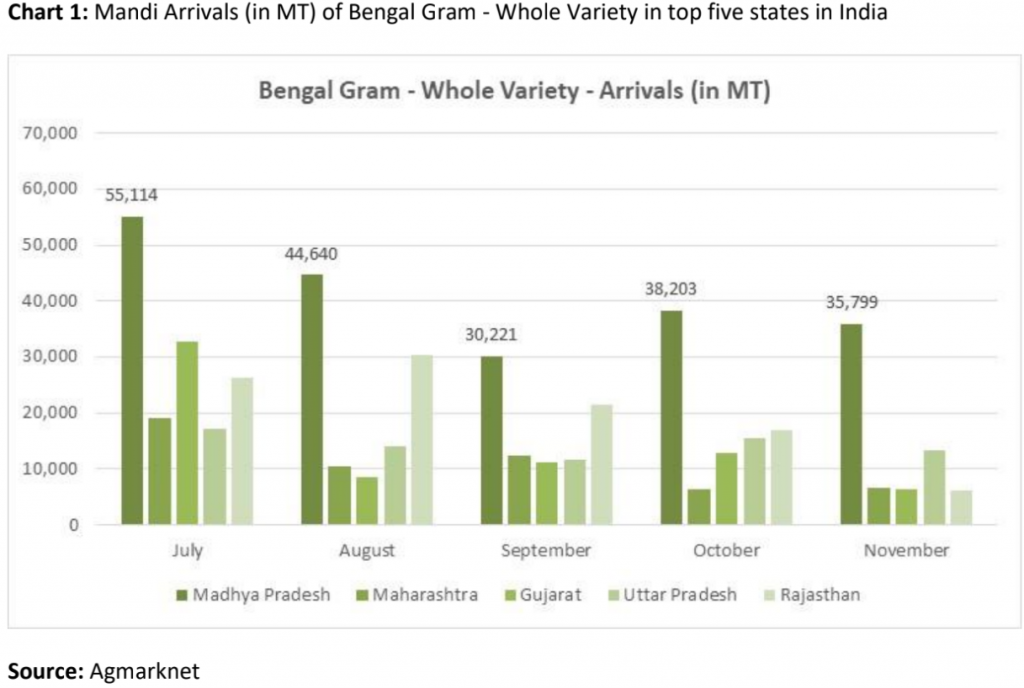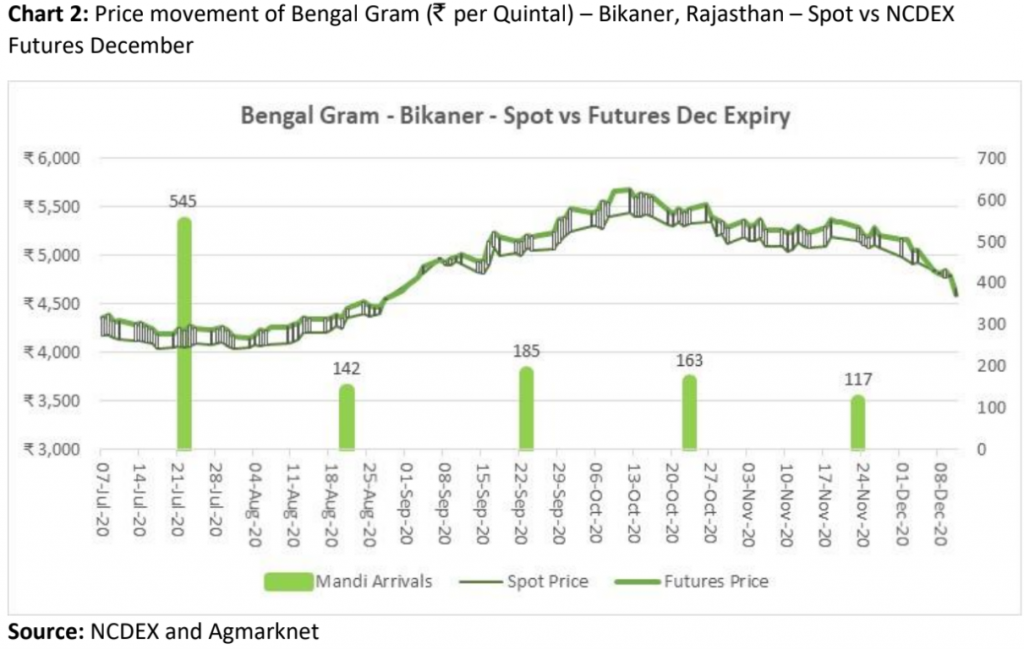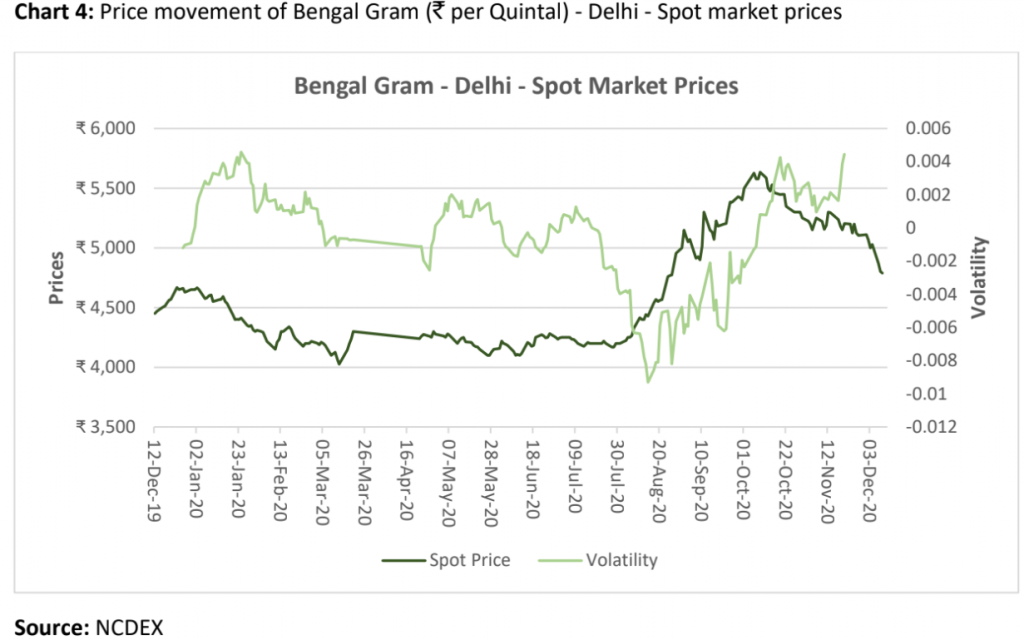Sowing period: September to November
Harvesting period: March to April
Crop season: Rabi
Key growing locations:
- Madhya Pradesh – Dewas, Khargone, Sehore, Ujjain, Vidisha
- Maharashtra – Amarawati, Akola, Vashim, Wardha, Latur
- Gujarat – Surat, Dahod, Rajkot, Amreli, Junagarh
- Uttar Pradesh – Kanpur, Lucknow, Varanasi, Ghaziabad, Lalitpur
- Karnataka – Gadag, Raichur, Gulbarga, Bidar, Dharwad
- Rajasthan – Tonk, Kota, Baran, Jhalawar, Ajmer
- Telangana – Adilabad, Warangal
Production trend and Stock position
- According to Ministry of Agriculture, the sowing acreage of Bengal Gram as on December 11, 2020 was 90.86 lakh hectares (lh) up by 12.90 percent compared to 80.48 lh during the corresponding period
- Stock positions of Bengal gram were up by 0.07 percent held at National Commodity Clearing Limited (NCCL) approved warehouses at Bikaner and Jaipur locations. The stocks held as on December 10, 2020 was 27,367 MT compared to 27,348 MT as on November 11, 2020

Monsoon Update
For the country as a whole, Seasonal cumulative rainfall during this year’s southwest monsoon season upto December 9, 2020 was above Long Period Average (LPA) by 5 percent. Details of the rainfall distribution over the four broad geographical regions of India are given below:



Note: Markets currently are in Backwardation where the Spot market prices are higher than the Futures market prices along with the Bikaner monthly mandi arrivals in MT.


Market commentary: Price outlook
- The Government had increased the Minimum Support Price (MSP) of Bengal Gram by 4.62 percent to ₹ 5,100 per quintal for Rabi marketing year (MY) 2021-22 compared to ₹ 4,875 in 2020-21.
- Overall Bengal Gram prices are likely to trade weak in the immediate / short term as currently Bengal gram is trading below the MSP.
- With the end of free distribution of 1 kg whole Chana under Pradhan Mantri Garib Kalyan Yojana (PMGKY) that ended on November 30, 2020, which could lead to a slowdown in demand resulting in price correction that is seen in the markets and the new crop is expected only in February 2021








 Connect With Us
Connect With Us